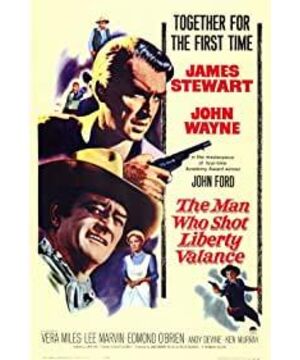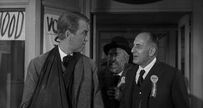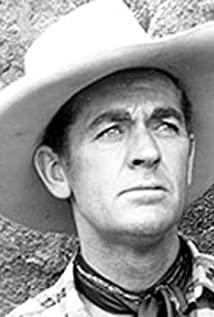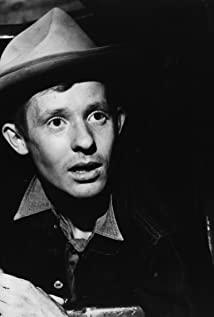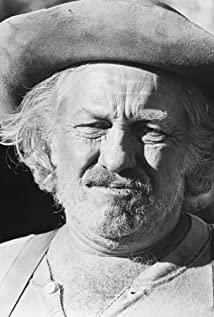Modernity and the Will of Director
one
For a film history that is not long and has a definite beginning, it is almost inevitable that some names will be destined to remain, especially for the only genre film that came out almost at the same time as the film-Westerns, it has been nearly a century. Liberty Valance’s enduring, old and firm frankly speaking is even more so. So in the narrow sense, "The Man Who Shot Liberty Valance" is the same as The Man Who Shot Liberty Valance. The structure of Man Who Create Western is the same. They don’t directly refer to a certain person semantically. It can be imagined that for the same person who "created" the Western movie, the answer may be a certain person: John Ford.
So while it is absolutely the highest praise to attribute the great achievements of the founding school to a director, it is also unexpectedly discovered that Ford, as the most Oscar-winning director in the history of the American Film Academy and film history, I have never won a director's award for any western film. There are so many other award-winning western films, but there is no "Ford West" among them.
Quoting as Bazin said in "Westerns, or Typical American Movies": "Because movies are sports, it is easy to say Westerns are the "most typical movies." Indeed, galloping horses and fighting with guns are Western The general symbol of the film. However, the addition only ends here. I am afraid that Western films can only be regarded as a special category in the thrilling film. In addition, the extreme movement of the characters is inseparable from the geographical environment of the characters’ activities, so it seems to be OK. The characteristics of western films are explained based on the scenery and natural scenery in western films. However, other types of films or film schools have also used the dramatic poetry of natural scenery, such as Swedish films in the silent film period. Although this poetry adds luster to these films , But there is no guarantee that they will endure... In fact, it is futile to try to attribute the essence of the Western to any of the obvious elements it contains. The same elements can also be seen elsewhere. It seems that there is no privilege to monopolize these elements. Therefore, Western films are not only its form. Reckless wasteland, galloping horses, fighting with guns, and brave and brave men are not enough to define this type of film or to generalize it. Charm...Usually, Westerns are identified according to these characteristics of the situation. In fact, they are only signs or symbols of the deep reality of Westerns. The deep reality of Westerns is myth. Westerns are a combination of a myth and a technique of expression. The product of: Before the film came out, the legend of opening up the western region in the form of literature or folk tales already existed. Moreover, the appearance of films did not make the western literature disappear. It still has its own readers and continues to make film plays Provide beautiful themes."
It is true that Bazin has already given the mythological definition of Western films. Of course, Ford’s lens also contains many self-explanatory elements such as horses, carriages, guns, and Monument Valley. These elements are so familiar to viewers who often watch Western films. So in fact, as long as you see the glimpse of the light and the fragments of Ford and Wayne, you can even roughly understand the outline of the story. This may be attributed to the way people outside of the West or outside of the West see the West. They use these symbols to refer to the West, and they use chivalrous stories to refer to myths. Finally, it is due to Ford’s lens. Under Ford's lens, when everything can be extended to a certain mythology of the myth, the myth itself becomes insignificant.
For "Two Tigers Slaying Dragons", its subversion and deconstruction keynote can be traced. It is not difficult to find that the opening and closing of the movie are the industrial symbol-the train, which is hardly seen in westerns. This has already made it clear that it is not a tradition. The concept of Westerns, and the era of "Two Tigers Slaying Dragons" has long been far away from the 1950s and World War II. It can't help but remind people that Bazin once used {Super Westerns} in "The Evolution of Westerns" against post-war Westerns. To define: "I will call all the forms used in post-war westerns collectively as "sur-western" (sur-western).... In order to show that it is opposed to the classics of the 1940s, especially the classics The tradition of sexual formation is opposed, and this formulation can be established. We say that “super-western films” are Western films that are ashamed of sticking to conventions and strive to add a new interest to prove their existence value: the new interest involves aesthetics, society, ethics, and ethics. Psychological, political, and pornographic aspects, in short, are inherent in non-Western films and intended to enrich some of its characteristics... The real impact of war was only felt after the war. The giant with war as the subject The film naturally came out after 1945. But the World War not only provided Hollywood with magnificent themes, but also forced Hollywood to get involved in thought-provoking themes for at least a few years. In the past, history was only the material of Western films. Today, history will Become a common theme in westerns."
two
As soon as the story unfolds, it is both a passionate soundtrack and a slow rhythm. The industrial symbols in the west that may have gone with the wind, all highlight the sentimental tone of the narrative. The Lance played by Stewart is reminiscent of being in the present. In the initial narrative of the past, the linear narrative must include flashbacks and interspersed narratives. Under this structure, the characters trace their past completion in the present tense. In "Two Tigers Slaying a Dragon", history is not only the theme of Westerns, but Westerns. It is also historical. In fact, it’s not difficult to find here that in a classic Western movie, a story that happened in three acts in the past is narrated today in a context that is no longer the original context when the story happened, as if history itself produced a certain " “Activity” hides the true face of the story. For today’s audiences, this story about the future has become the past, so this story about the future in the past can be understood by today’s audiences. When it comes to its magnificent picture, but because of some mysterious "activeness", it is not able to see its full picture. Naturally, an unknowable but sensible mythology is produced. This can explain Bazin’s remarks about {Western film is a myth. }'S thesis.
However, between the beginning and the end, the typical narrative of "traditional westerns", including flashbacks, interludes, and contrasting expressions of "Two Tigers Slaying Dragons", seems to be in line with "super westerns" with the help of the existing symbols of western films, and through changes The definition of the new meaning given by the structure, in fact, through the integration and diffusion of the structure, the intertextuality between Lance played by Stewart and Tom played by Wayne has already formed a larger category of symbolic and referential meaning inside and outside. , And far beyond the "super western film" has become a "super · super western film."
three
In summary, the endings of two completely different characters, the sentimental tone of flashbacks and contrast expressions, and the deconstruction and reconstruction of symbolic nesting structures through various symbolic contrasts, there is irony, criticism, nostalgia, and hope. . It is particularly important and necessary to ensure the spiritual world built in it. From the story, Stewart Lance, who has become a senator, as a political figure, his current success inevitably means some persistence in the past; Wayne Tom, who has passed away, may have experienced some failure in the past. Or frustration or even punishment. This pair of compound protagonists’ two-sided, intertextual, and completely different and equal encounters clearly corresponds to another mythological story that can be called the most magnificent in human history, which is the story of Jesus Messiah in the Bible.
The first ancestors of mankind Adam and Eve stole the forbidden fruit to gain original sin. In order to cleanse their sins, Jehovah gave his only son to mankind. This is the explanation of the principle of God’s love for man. Original sin is the reason why people need salvation. The method of investigation is nothing more than a large number of monotheistic religions. It’s just listening to the teachings of God, but the narrative of the Bible is obviously a little bit wise. Following and listening to the teachings are not all, and God has already formed flesh and came to the mortal world, not just for preaching, but also to replace A person accepts punishment and is tortured for others. Then he came to condemn and suffered for others. The crime was so great that he could not be forgiven. Before God became flesh, he already knew his fate and knew that he was going to be betrayed and tortured, but he still came, and he was coming. At the last moment of death, we are still justifying the sins of mankind. This is a blend of time and space narratives and the ultimate irony of flashbacks from the perspective of the narrator. Secondly, God is both human and divine, and he is the law maker. There seems to be really around people, which represents the convergence of the characters.
In contrast, Ford’s "Two Tigers Slaying Dragons" starts with the original sin that has become a certain historical western film to "redempt" the western film. It must be noted that Jehovah and Jesus are not the same person. The God himself, who is absolutely legalized, is the symbol of civilization represented by Lance, but it is Jesus who has lived and died and resurrected to fulfill the mission, which is the symbol of the old western era represented by Tom. In the internal logic of the Western world, where personal moral values are meagre, only the law can stipulate the order of goodness and the goodness of order. However, when the law claims to guarantee social morality but does not take into account the value of the individual in society, it is hard to say that the law is fair, so heroes sometimes even need to be as strong and brave as lawbreakers, but being strong and courageous does not equal in any sense. Compared with virtue in the absolute sense, this forms a paradox in which heroes and lawbreakers may converge. However, heroes who uphold the narrator’s value orientation and output expression must have the ability to “legitimate” and “justify” their behavior. "The sign of ", the necessity of law and the necessity of morality are in the protagonist of the Western film unprecedented opposition but united. Throughout the world of Ford’s story, in "Guan Shan Fei Du", Wayne, who wants to kill for his father and protect the safety of the carriage, is the contradiction and unity of this contradiction. Fonda, who is in danger, is also the contradiction and unity of this contradiction; in "Searcher", it is still the contradiction and unity of this contradiction to save niece and Wayne who kills niece.
......
On closer inspection, this criss-crossing contradiction also runs through Ford’s films other than westerns and characters other than the protagonist. For example, the fact that they were driven away by Ducheng female cultists in "Guanshan Feidu" is even more worthwhile. Respected prostitutes; the terminally ill doctor who exiled himself and died with determination and courage in "Xia Bone Tenderness"; the Indian outcast who did not have the same blood but never gave up obtaining true love in "The Searcher" and so on.
When watching the end of Ford movies, it is not difficult to find that even the irony is mostly an optimistic "Hollywood ending". How can the two contradictions be effectively unified and achieve a delicate balance of one output? This requires an in-depth exploration of the relationship between Ford’s story world and the language of the film. Technically speaking, Ford’s simple and atmospheric composition, meticulous lighting, and sequence editing without traces, basically serve the story with all his heart. In the United States In the development of film, Ford, as a historical leap from silent film to sound film, black and white to color, has almost the same technique. When the image of a film becomes more complete and even perfect, its language is also The more hidden it is, it is difficult or impossible to be noticed. In the same way, from the almost invisible "new system" technique in silent films to the highly completed story of the new world, it is precisely from the {sin} that conquered the west to The development of the west is the same as {US}, the dialectical intertextual relationship from "bearing the original sin" to "Hollywood ending".
Four
Correctly treating the good and evil under the natural simplicity will produce the original concept of good and evil, the contradiction between the transcendent attributes of social law and the moral laws and regulations, and the absolute necessity of setting laws to ensure order and the personal moral conscience that cannot be ignored The contradiction between necessity is dialectical to each other, and it is just like the original sin of mankind was redeemed until Messiah Jesus died for mankind, and the value rationality of the original human was produced. That is to say, history is only the "sin" carried by Westerns, and Westerns themselves become history. The process of "beauty". Based on the content of Ford’s story world, it can still be divided into form and content, from injustice to happy ending, from "sin" to "beauty". Although it contains different subjects, it seems a little abrupt, but it is Unification under the theme is the multifaceted manifestation of Ford's calm but firm belief, family view, and full life philosophy composed of romanticism, that is, like the Bible, God condemns "sin" and mankind gains "beauty".
five
Now, when we are really getting closer to the true thinking of John Ford, we can find that in his film world, the bottom logic of the unification of legal and moral necessity of legalization and "justification" is the deep logic. The eternal value of the spiritual world, then what is the bottom logic? Let’s first look at Ford’s world. He grew up in an Irish immigrant family, with grandparents, parents, and siblings. Ford is not like the West. Like a cowboy, he is a lone cowboy character. In each story, Ford can always accurately grasp the manners and emotions of the people in each story, and can always use the simplest scheduling to outline the complexities and changes in many characters. He never avoids the pain, but always accepts people in the warmest and easy way. This is Ford’s genius, and it is also the natural consciousness established by his family concept and childhood experience as an Irish descendant. . {Sin} and {美} are not directly related, just as the "punishment" of Jesus is missing during God's condemnation of "sin" and human beings' "beauty". Specifically, sin and punishment are separate Punishment and beauty are also separated. It is not necessary to expand all the connections, but to express feelings and sentimentality, and to look forward to the future. A peaceful and beautiful is the original intention and persistence of John Ford in creating Western films and all his films with a romantic attitude. .
six
At this point, we can finally see John Ford’s true thoughts, which are extracted from Protestant ethics. The spirit of pioneering the American continent can be found when we can further dialect Ford’s films and who they are. The consistency of enlightenment between the two. Ford’s grasp of reality does not come from imagination, but more from his life experience, inheritance from his Irish homeland, American-style Puritan education, and beliefs he insists on. This is the starting point for his observation of reality, and this firmness The starting point of grounding is one of the starting points that a realist should have. The grounding and realistic nature of this starting point also means that Ford itself is far beyond the introspection and self-examination of ordinary people. For example, reality and reason in "Youth Lincoln" refer to the conflict between cleanup and law; the surge of left-wing thoughts in "Grapes of Wrath"; the poetic symbol of present and future in "Green Hills and Green Valley"; the arrogant general in "Fortress Storm" Sacrifice; the sad anti-war in "The Journey Home" and "Mr. Roberts"; the optimism and harmony of family reconstruction in "A General's Achievement"; the melodious polyphony of a North and South family in "The Sunshine"; "The Searcher" Redemption and self-salvation in Central Indian and Western...
seven
When we look back at "Two Tigers Slaying a Dragon" again, from a symbolic point of view, the flowers blooming on the cactus; the illiterate Hallie married to Lance, which symbolizes the future; the small town emerges from nothing Ford’s peculiar sentimental tone, such as railways, unknowingly and subtly changed the plot and structure of the entire movie. In the linear time course of linear narrative, flashback means the clarity of the ending. This partly constitutes a dramatic irony. The "super" as a metaphor in the western film itself appropriately deconstructed the irony of the drama, showing that Lance became the result of the senator and the political magnate, and to a large extent it also came from Tom's hand-off "seemingly killing." , But actually did not kill Bette Valence", the overall expression is-to affirm the value and historical significance of oneself and the future (whether active or not) by sacrifice. Under the structure of the overall narrative in which Lance recalls the initial flashback narrative, it starts from the subjective narrative of the subjective stream of consciousness, as the "suspense" is mysteriously suspended by why the politicians want to mourn the unknown cowboy. Where Geffin is, he uses another serious suspense about who shot Libert Valence to form a double nest, and then closes the suspense by closing the mystery with Tom’s telling the truth about Lance, and knows that all the suspense is false. In fact, it’s not that Tom couldn’t shoot Libert Valence, maybe he just didn’t find an opportunity, and Tom wouldn’t really fail to save Lance, because the dramatic irony is based on Lance’s survival and becoming a politician. As a prerequisite. Therefore, we can finally uncover the real motives of Ford, as the hidden author, about McGeffen, why a state governor who is re-elected as a state governor is so politically powerful and is likely to become a vice president. It will not be too long for a few days. The journey of a few nights to mourn an unnamed old cowboy precisely expressed the memory of the Western era for the United States at that time and even the United States today, and praised their contribution and significance for the future generations. After all, Lance did not shoot the ideals. The flower blooms on the land of tolerance that Tom has dedicated his life to. The invisible but not negligible "punishment" is forever hidden but worthy of praise forever. In this kind of deconstruction and reconstruction, there are irony, criticism, and certainty, and there is also the interaction of signs and metaphors. In the end, the positive and sentimental feelings affirmed that the West and the United States are indispensable. An indispensable and always missed part, this may be the unparalleled extreme romance that can present the highest sincerity and respect in Western films.
Eight
At the end of the day, when looking back at Bazin’s quote in "Westerns, or Typical American Movies": "...Westerns must contain a deeper mystery than the vitality of youth: eternal Mystery; this mystery is equivalent to the nature of the movie in a certain sense.” Perhaps this question can be answered tentatively, because in the second large paragraph above, a certain principle explanation about mythology is disrupted or sealed by “activeness” Although the part of is embodied in the unknowability of the object itself, when it is actually just a realistic story, then, for the "myth" itself, it is a realistic story of the "myth", and it is As far as the past has become a "myth", it is also history. Once the past, present, and future in linear time are broken and reorganized, they are completely interchangeable with each other. As long as there is linear causation, as long as our current life does not completely collapse, the so-called myth must include the composition of reality. It is the reality and material basis of the movie itself that is implemented from the western film. In fact, there is no "Ford West" in the west. It is completely because of Ford's western world. Ford's spiritual world has already become the real real world, the real western world. The world, even the current movie, exists in this real world. Ford’s westerns have long surpassed the westerns and become the film itself. By extension, "Two Tigers Slaying Dragons", there is also this sentence: "When the legend becomes fact, print the legend (when the legend becomes reality, the legend will naturally spread). "So, maybe it can also be said: create myths from reality, and keep them, them, and them on the screen forever, seeing the sentimental and poetic Romance has become the reality that we can truly inspire, inspire, and brave ideals. Of course, it may definitely be one of the eternal mysteries of the movie.
View more about The Man Who Shot Liberty Valance reviews


